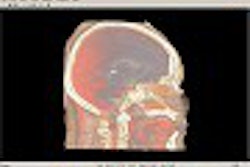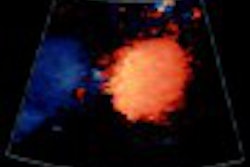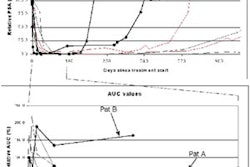
Many women who present to their physicians with focal breast pain are referred for an ultrasound exam. But does sonography have any value beyond serving as patient reassurance that their pain is not cancer-related?
Researchers from Brigham and Women’s Hospital in Boston and the University of California, San Francisco looked at the utility of ultrasound for the evaluation of mastalgia or mastodynia. They reported their results in the Journal of Ultrasound in Medicine.
Breast pain is one of the most frequent reasons that women seek medical attention. This pain can be of two types: diffuse unilateral or bilateral pain that appears to be tied to the hormonal changes of menstruation; and noncyclic, unilateral, localized pain that is described as sharp or burning.
"In our practice, targeted sonography is performed to evaluate focal breast pain...we aimed to identify the number of cancers detected through the use of sonography and to determine whether the diagnosis of benign lesions affected clinical treatment," wrote Drs. Jessica Leung, Phyllis Kornguth, and Michael Gotway (JUM, May 2002, Vol.21:5, pp. 521-526).
This retrospective study focused on 110 ultrasound exams performed only because of focal breast pain. Linear transducers in the 7.5-10 MHz range were used, and all exams were performed by radiologists experienced in breast sonography.
According to the results, 77.3% of the ultrasound exams were negative. Cysts ranging in size from 3-30 mm were identified in 13.6% of the cases. Three patients had solid, nonpalpable masses at the sites of focal pain. Two masses underwent biopsy and yielded benign results, including a 0.60-cm fibroadenoma. The remaining cases consisted of edema and focal fluid collection, all post-operatively.
The group calculated the probability of these patients not having breast cancer at p=.99, with an exact confidence interval of 0.97 to 1.0.
"We also examined the use of sonography in the evaluation of focal breast pain as a function of age," they said. They found that women in their 30s made up the most common age group to be referred for an ultrasound evaluation.
The researchers also determined that 92% of the patients were referred by general practitioners (ob/gyns, internal medicine specialists). "One might conclude that targeted sonography might be used by nonsurgeons as a screening test before surgical referral," the group said. Referring physicians may favor ultrasound because it does not involve ionizing radiation.
While the authors did not deny the importance of reassuring patients, they questioned the additional costs of working up incidental lesions found on breast sonography. Two of the three solid masses in this study were excised for diagnostic rather than therapeutic reasons.
"These costs are not only financial but also may be associated with patient morbidity when invasive procedures are involved," they wrote. "In the absence of evidence-based data that justify the use of targeted sonography in patients with isolated focal breast pain, we should be mindful against its inappropriate use."
By Shalmali PalAuntMinnie.com staff writer
October 7, 2002
Related Reading
Sonographic findings in focal fibrocystic changes of the breast, May 29, 2002
Copyright © 2002 AuntMinnie.com



















